There has been a lot of talk lately about the macroeconomic state the world is in at the present moment. Arguments have been made for deflation, which is a decrease in the general price level of goods and services. Deflation technically occurs when the inflation rate falls below zero, causing a negative inflation rate.
Disinflation is the slowdown in the rate of inflation. In other words, the inflation is decelerating; prices are still going up over time but not increasing as fast they were in a different time. Disinflation turns into outright deflation when the inflation rate falls below zero. Disinflation has become a buzzword amongst the pundits today to describe the current global environment. A Google trends search reveals that talk of disinflation has increased as the chart below shows:
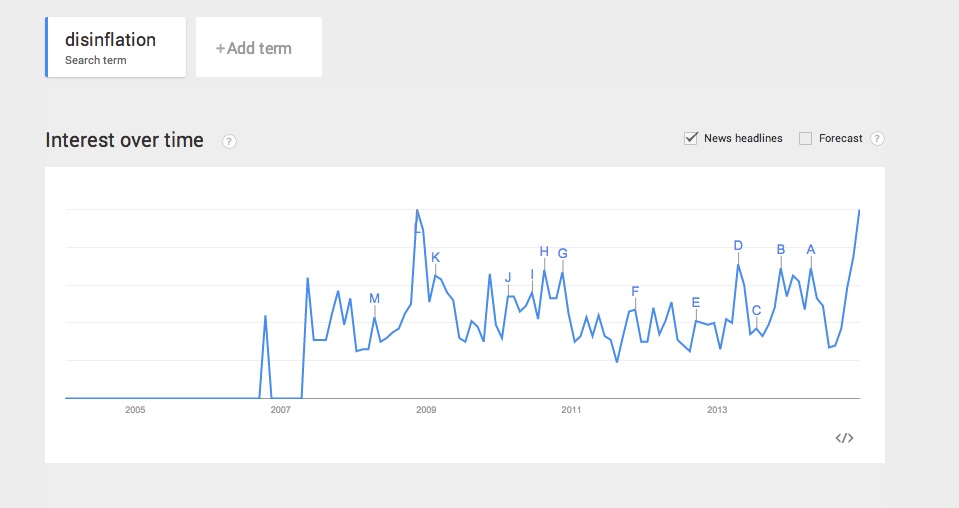
Talk of deflation has also started trending up as well but has not come close to its 2009 peak when were in the financial crisis:
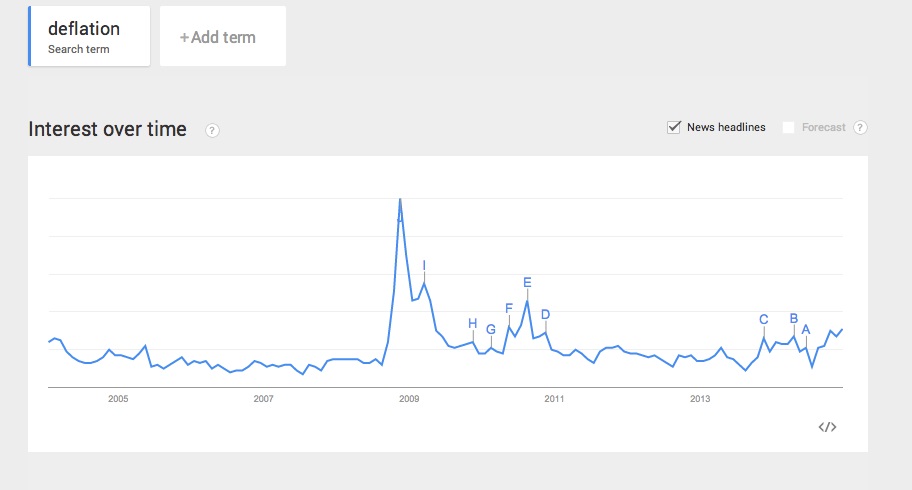
This article will discuss both deflation and disinflation by looking at the various asset classes and assess the current global economic situation.
Deflation Takes Hold
According to John Murphy, the father of intermarket analysis, in 1998 the world shifted from an inflationary environment to a deflationary one. This started with Asian contagion and the Thai Baht collapse. Asian central bankers raised rates to support currencies, but these high rates choked off their economies and compounded their problems.
This was followed by the Russian default and the collapse of Long Term Capital Management. The threat of a global deflation pushed money out of stocks and into bonds. Stock prices went down, bonds prices went up and US interest rates collapsed. This marked a decoupling between stocks and bonds that has lasted many years. Other big deflationary events included the dot-com bubble in 2000 and the Great Financial Crisis in 2006-2008. See chart below:
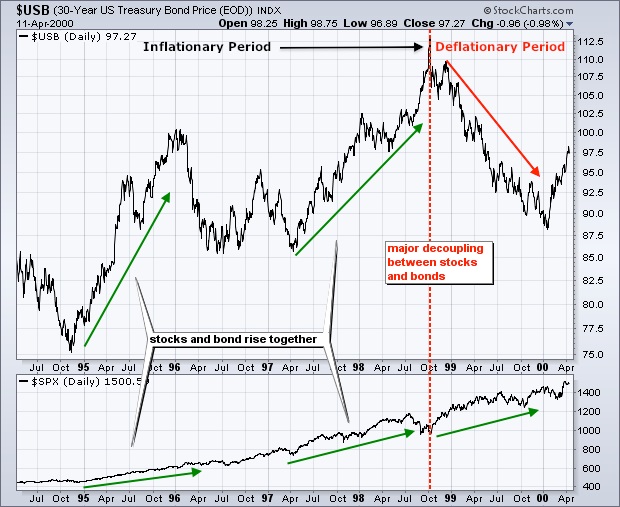
The US Dollar Re-emerges
The USD has begun a new uptrend and broken through price levels last seen in 2004 (see: chart below). This is the biggest development in the intermarket picture and the key driver of the current global situation. The effects of a rising dollar are multiple:
- It shows an improving US economy; as a country’s currency is a reflection of its economy. Countries with strong economies have stronger currencies;
- A rising USD puts downward pressure on commodity prices (see: chart below) because many commodities are priced in dollars.
As a result of the downward pressure on commodity prices, bond prices increase because this reduces inflationary pressures. This means interest rates and commodities/gold trend in the same direction. Rising commodity prices are a signal of rising inflation pressure and falling commodity prices are deflationary. Interestingly enough; commodity prices often change direction ahead of bonds, so they are a leading indicator of bonds at important turning points;
- Stocks can also benefit from a decline in commodity prices because their inputs are reduced, i.e. the cost of raw materials. The correlations below (in the charts) show these relationships to be strongly holding;
- Most other currencies underperform when the USD is strong as well. Essentially what a strong USD means is that the US is exporting inflation and importing deflation.
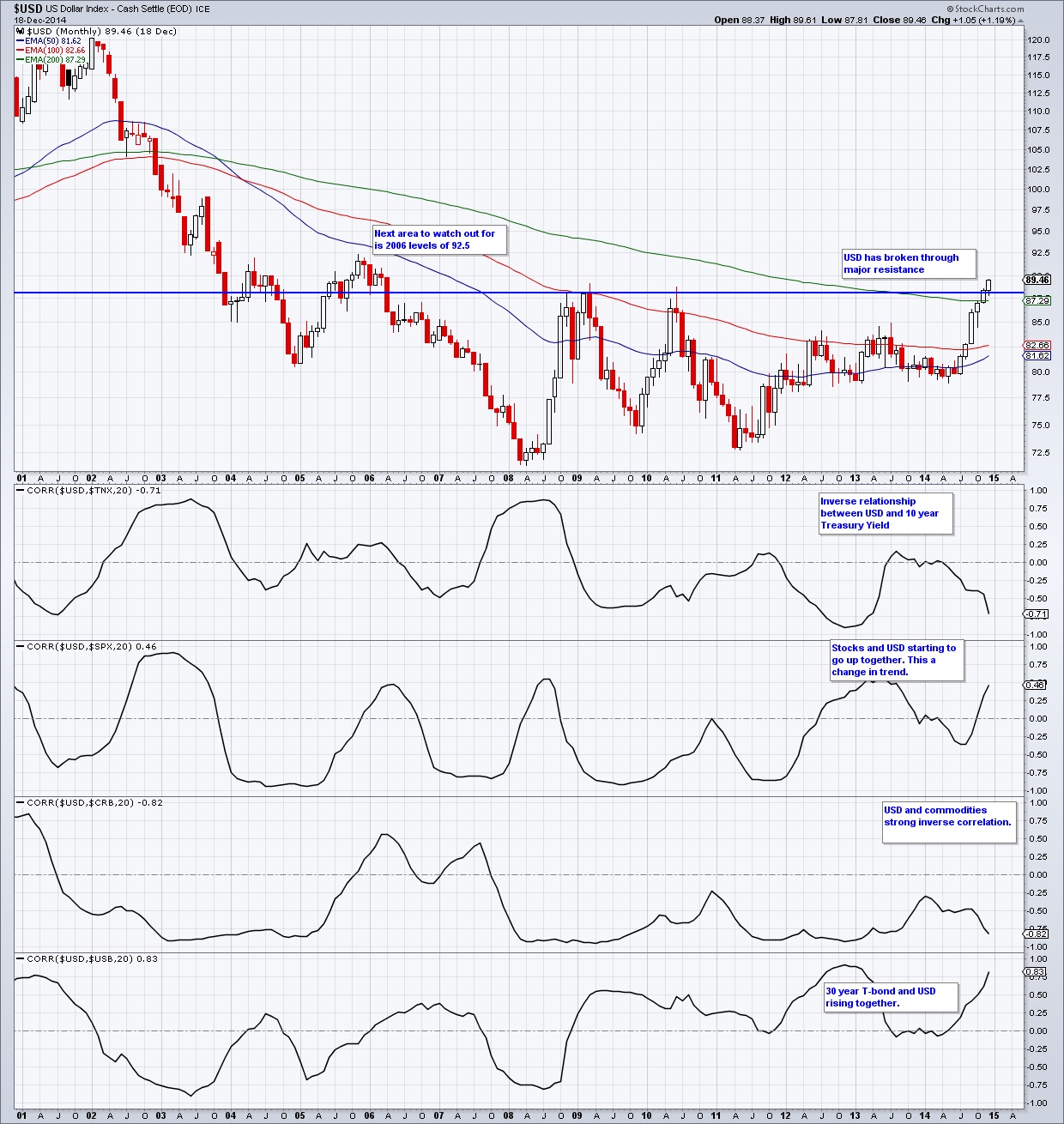
Below is a chart showing various commodities like gold, silver, cotton, oil, natural gas and agriculture versus the rising USD:

Below is chart showing the USD dollar vs. a basket of currencies:
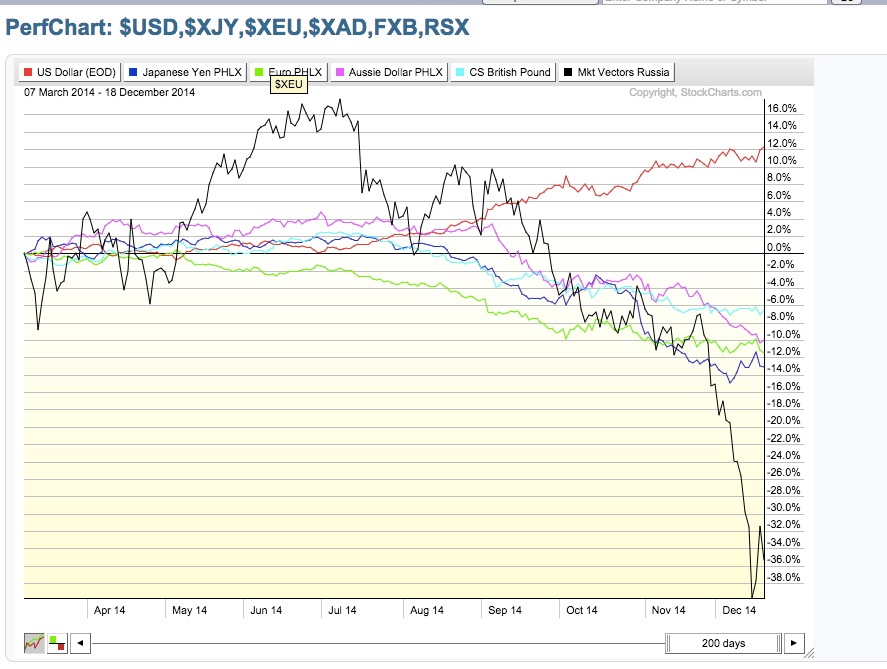
Bitcoin which has been stated in previous articles is a commodity rather than a currency. The chart below puts Bitcoin in the same category as most other commodities with the headwind of USD strength. In fact, Bitcoin has been hit harder than any other asset class and remains the worst performing asset of 2014. The chart below shows oil and Bitcoin falling together, overlaying them would provide a fairly similar chart.
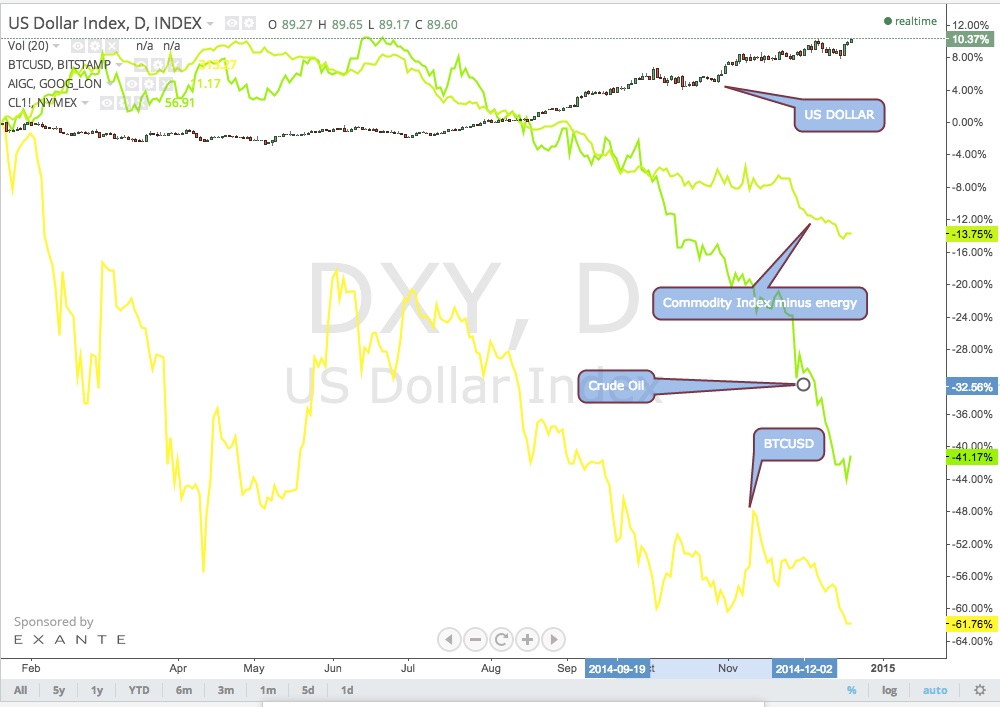
All of the charts above certainly have deflationary overtones to them, yet true deflation is yet to take hold. The spectre of deflation remains constant as can be extrapolated from the latest Federal Open Market Committee meeting. There have been some changes to the language, which Fed watchers have noted. The Fed dropped the “considerable time” forward guidance to raising interest rates and replaced it with being “patient.”
This has led some to speculate there will not be a rate increase until at least mid year and possibly not until 2016. The Fed upgraded its assessment of the labor market (this is dollar positive). They are no longer saying that labor resources are “significantly” under utilized. The Fed has used language to say that surveys of inflation expectations have been fairly stable while market measures have fallen, while at the same time saying they will monitor inflation measures closely.
These are both signs of disinflation and show the Fed is still scared about the possibility of outright deflation. There have been many articles written on the true state of the US recovery and its bifurcation between different social classes. The fragility of this recovery has been one of the hallmarks of it. Without the help of the Fed, it is unknown how sustainable this recovery truly is. The rapid collapse in oil prices along with the decline of the entire commodity complex accompanied by the current situation in Russia will certainly have the Fed on alert and being “patient” could be a long drawn out process as the rest of the world, particularly Europe, could come unhinged at any moment.
At the moment it seems certain we are in an environment of disinflation. However, this could turn into deflation before anyone realizes it due to the current volatile global macroeconomic backdrop. There are 4 strong deflationary factors which should be noted:
1) Global indebtedness levels have increased not decreased since the beginning of the financial crisis;
2) Global demographics show a rapidly aging population;
3) The growth and improvements in technology are deflationary in terms of the prices for goods and services (cheaper, better goods);
4) Globalization has caused the average worker to have little pricing power in terms of wages. In other words, wages have fallen not risen per output.
Did you enjoy this article? You may also be interested in reading these ones:
